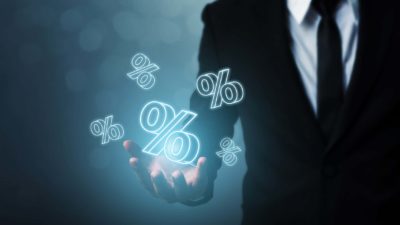Okay, we get it. Inflation is high so interest rates need to rise.
But after a whopping 125 basis point increase over the past couple of months, grocery bills surging, record-high petrol prices and a pummelling of our ASX shares, isn't that enough pain?
Surely putting people through such financial stress can't be good for the economy either?
AMP Ltd (ASX: AMP) chief economist Dr Shane Oliver explored this very dilemma this week.
"Many are still questioning why central banks need to do much – what will RBA rate hikes do to bring high lettuce prices back down?" he said on the AMP blog.
"And that central bank worries about wages growth picking up causing a wage-price spiral are just a baby boomer fantasy. So just sit it out."
Authorities are scarred by the 1970s
The reason why central banks want to kill off inflation at any cost is because of the experience from the 1970s.
There were a bunch of reasons for inflation creeping up high that decade in Australia and the United States.
According to Oliver, the problem was exacerbated in Australia with wages growth of more than 20% and huge fiscal stimulus in 1974.
"The automatic indexation of wages to inflation from 1975 just helped lock in high inflation," he said.
"The end result was a decade of high inflation and high unemployment."
Unfortunately, central banks and governments did not help the situation.
"The problem was that policymakers were too slow to realise the extent of the inflation problem initially and then were too quick to ease which enabled inflation to quickly pick up again and move higher," said Oliver.
"The longer inflation persisted the more inflation expectations rose – with wage growth rising – making it harder to get inflation back down."
Will we go back to the future?
So how can 2022 turn into the 1970s?
Labour markets are once again very tight. In the US, wages growth has burst out to about 5%, while Australia's unemployment rate is now at a 48-year-low of 3.5%.
The war in Ukraine has resulted in supply shocks for both food and energy, which have surged in price. In Australia, the east coast floods have added to the food inflation.
Recent geopolitics and the COVID-19 pandemic have changed the way nations and corporations conduct business.
"The globalisation that followed the end of the USSR and trade with China is under threat and appears to be reversing, not helped by a desire to onshore supply chains."
Decarbonisation of economies are also boosting short-term capital spend and demand for certain metals.
Also, authorities are just coming out of a long period of low inflation.
"Policymakers were caught focussing on the last war of disinflation coming out of the pandemic just as they were in the 1960s when the big fear was a return to 1930s deflation," said Oliver.
"This saw massive fiscal stimulus and money supply growth."
Inflation leads to inflation expectations, which is dangerous
All these reasons are why central banks are so determined to blunt inflation, even if it means our ASX shares take a beating and economies might even fall into recession.
Inflation is running around 9% in the US and Europe, while in Australia it's estimated to be about 6%.
"And, as we saw in the 1970s, the longer it remains high the more businesses and workers will expect it to remain high and they will plan accordingly," said Oliver.
"That is, inflation expectations will move up, which will make it harder to get inflation back down."
Central banks can't bring down the cost of lettuce or unleaded fuel. But they're correct in trying to do whatever they can to dampen demand, according to Oliver.
"They are right to have moved to a more aggressive strategy as it will slow demand and by stressing that they are committed to returning inflation to target will help keep inflation expectations down."
Oliver is optimistic that the authorities will be successful and that the world will not slip into the awful stagflation spiral of the 1970s.
"Longer-term inflation expectations remain low (at 3.1% in the US compared to nearly 10% in 1980) and wages growth is still relatively low, suggesting it should be easier to bring inflation down than it was in 1980," he said.
"While inflation may not go back to pre-pandemic lows and the longer-term tailwind for investment markets from ever lower inflation and interest rates may be behind us, a full-on return to the 1970s malaise looks unlikely."








